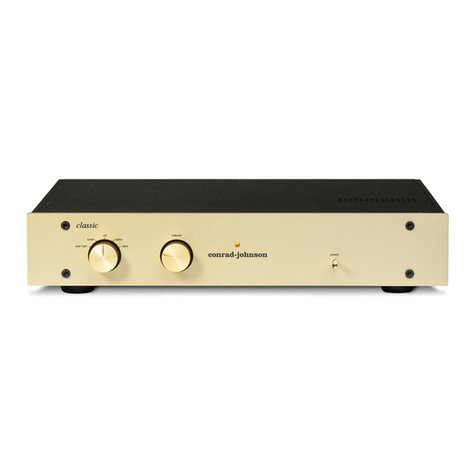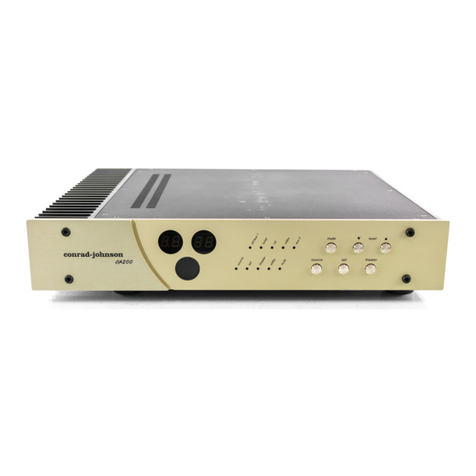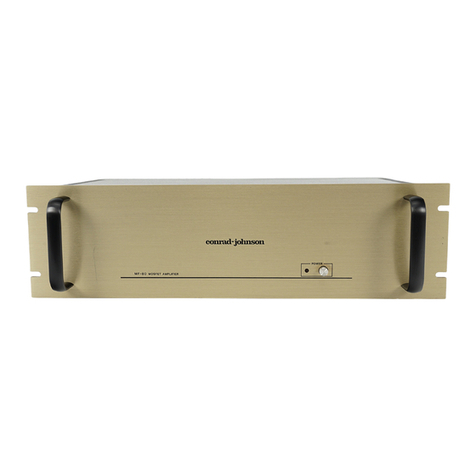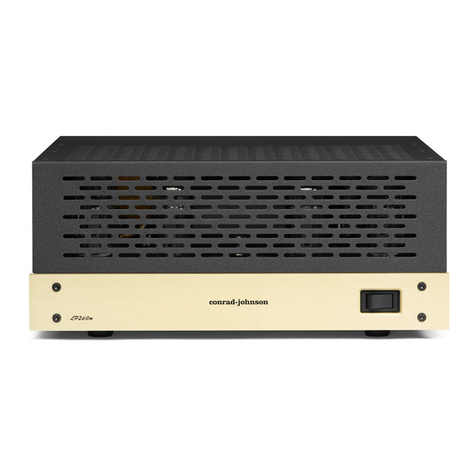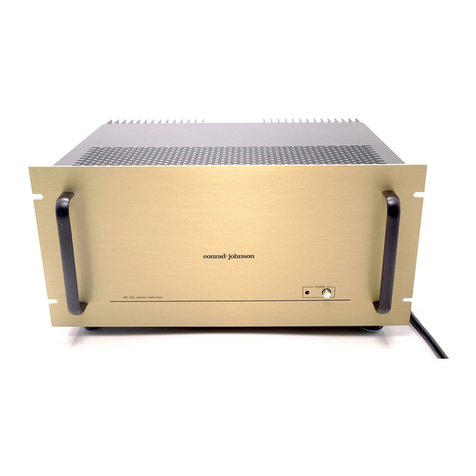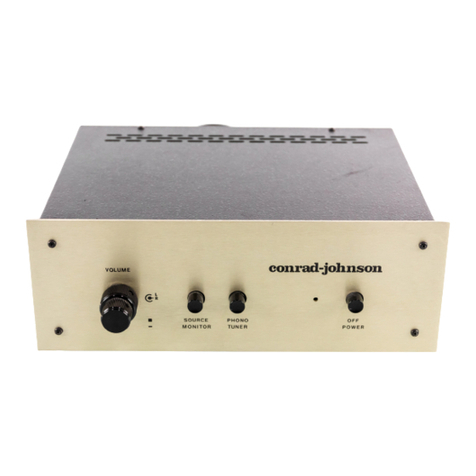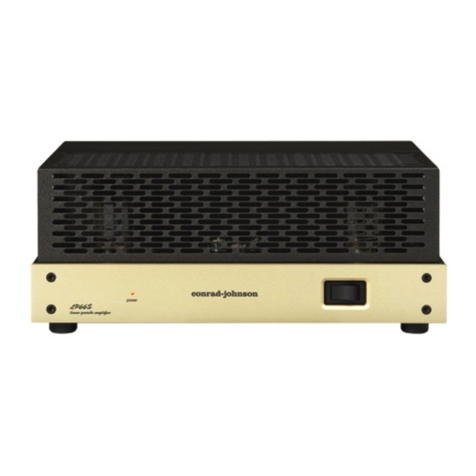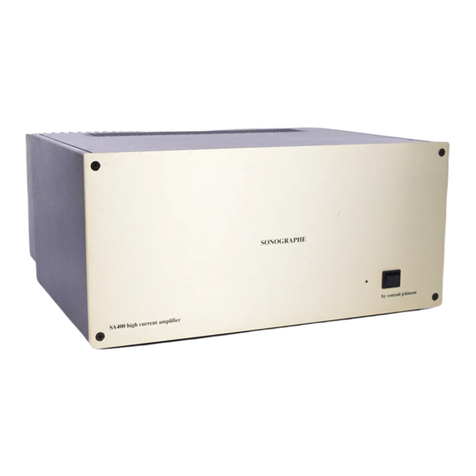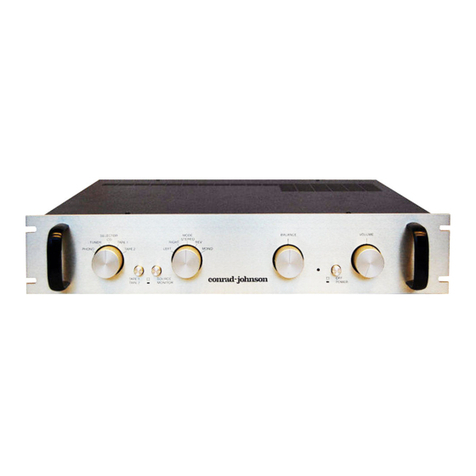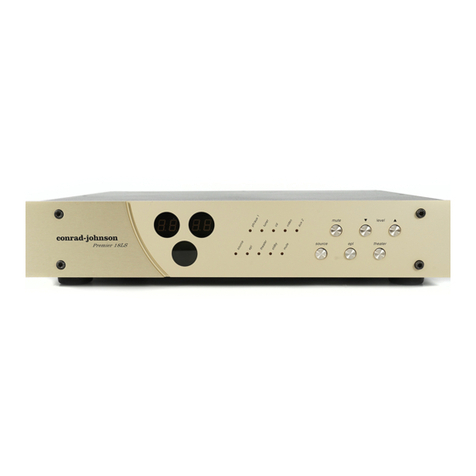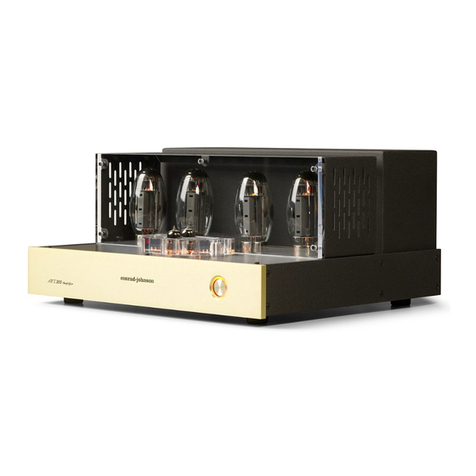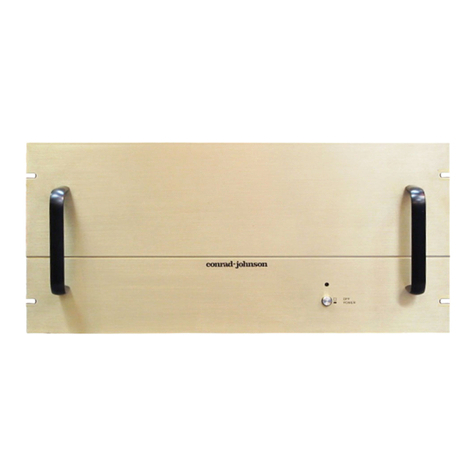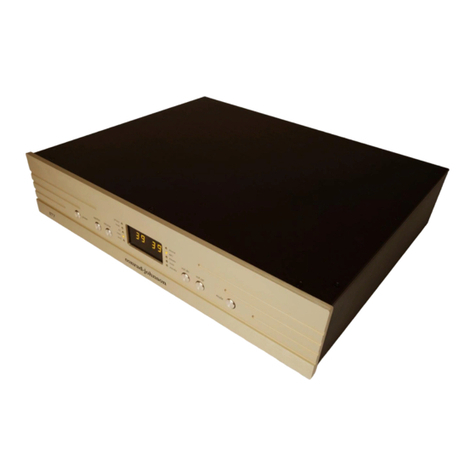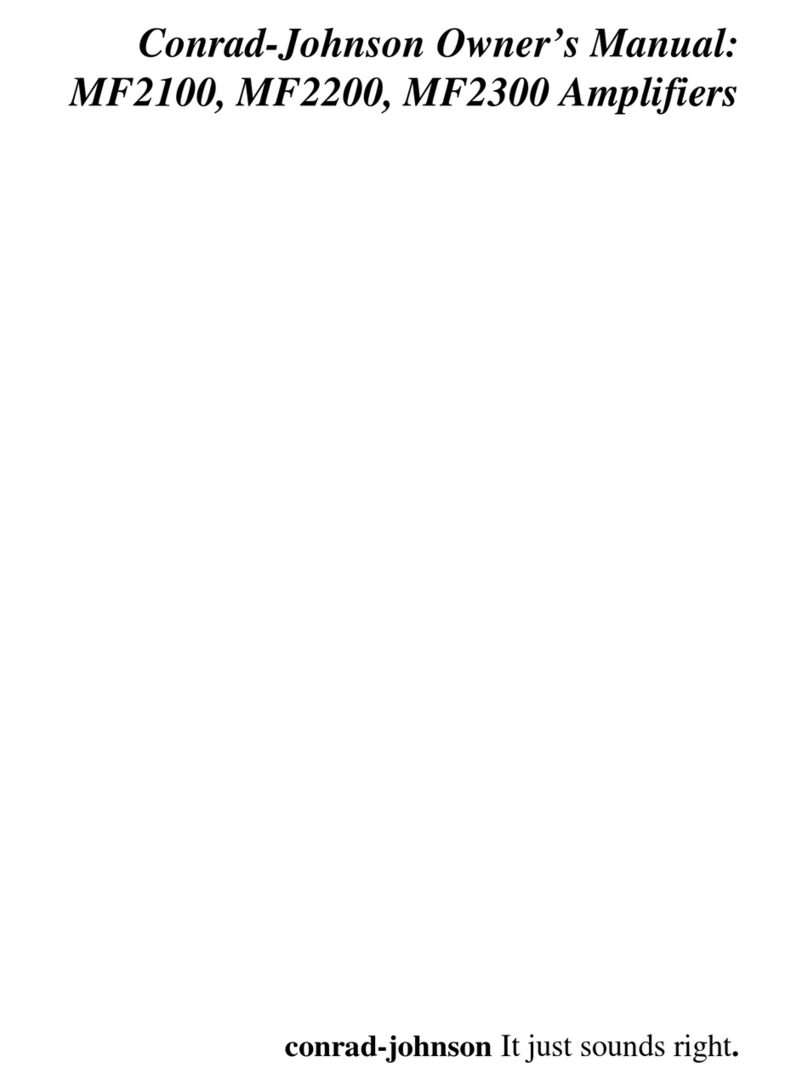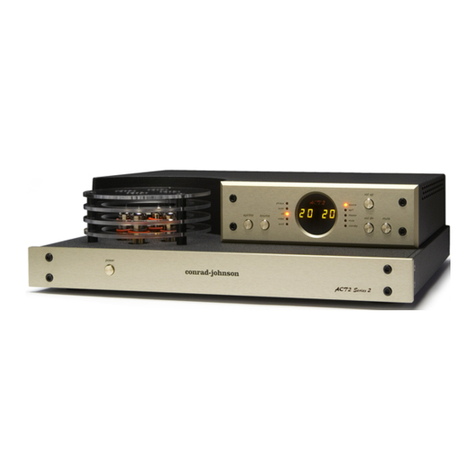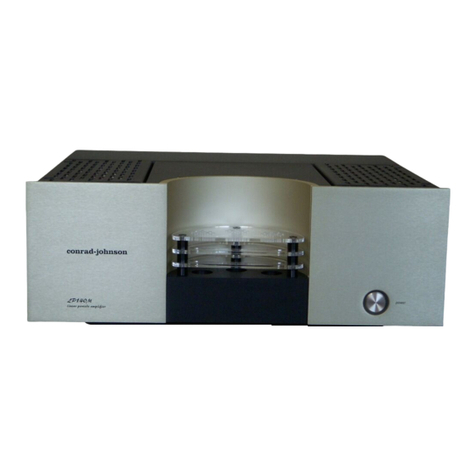
Limited Warranty For Conrad-Johnson Components
conrad-johnson design, inc. will provide service under warranty to the
original owner on products sold new in the United States for the lesser
period of three years from the date of purchase by the original pur-
chaser, or five years from the date of shipment to the authorized
conrad-johnson dealer. During the warranty period, conrad-johnson will
repair defective units without charge for labor or parts (with the excep-
tion of vacuum tubes and batteries).
Exclusions. The following are not covered under this warranty:
a) Units which have been damaged by misuse, abuse, or accident.
b) Units which have been modified, altered, or improperly repaired by
anyone not specifically authorized by conrad-johnson design, inc.
c) Units not purchased from an authorized conrad-johnson dealer in the
United States for use in the United States.
d) Normal wear.
e) Incidental or consequential damages are not covered under this
warranty. Some states do not allow the exclusion of incidental or
consequential damages, so this exclusion may not apply to you.
Obtaining Warranty Service:To obtain warranty service, the unit must
be shipped, along with evidence of purchase, in factory packing to
conrad-johnson design (or designated service center) with freight and
insurance prepaid by the owner. After repair, the unit will be returned
with freight and insurance prepaid by conrad-johnson design to any
destination in the United States.
All implied warranties, including merchantability and fitness for a par-
ticular purpose are limited in duration to the duration of this express
warranty. Some states do not allow limitations on the duration of implied
warranties so the above limitations may not apply to you.
This warranty gives you specific legal rights and you may also have
other rights which vary from state to state.
Conrad-Johnson products purchased outside the United States are
covered by warranty terms of the importing distributor in the country in
which the product was originally purchased, which may differ from the
terms set out herein. Importing distributors are not obligated to provide
warranty service for products originally purchased outside their country.
Conrad-Johnson will provide warranty service for products outside the
CAV50 Owner’s Manual 2
